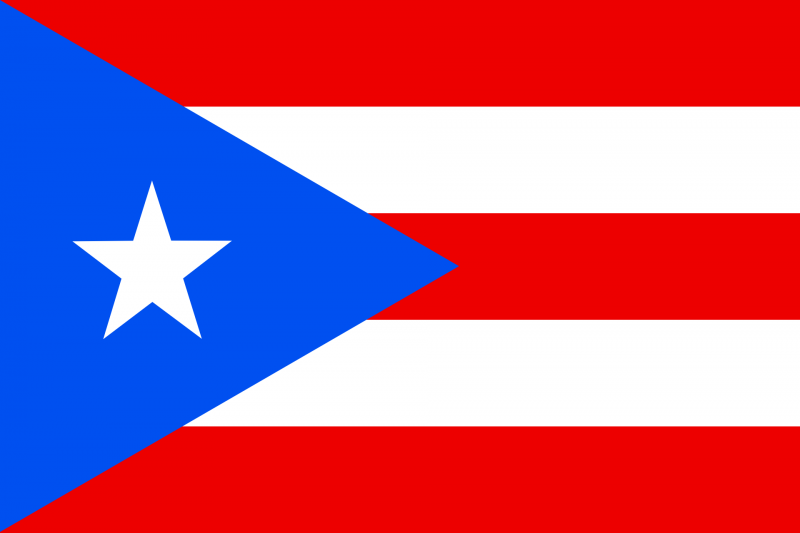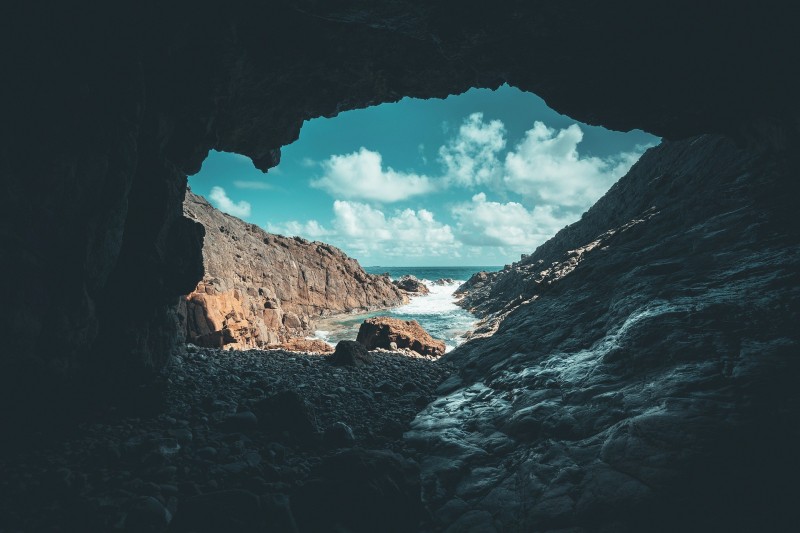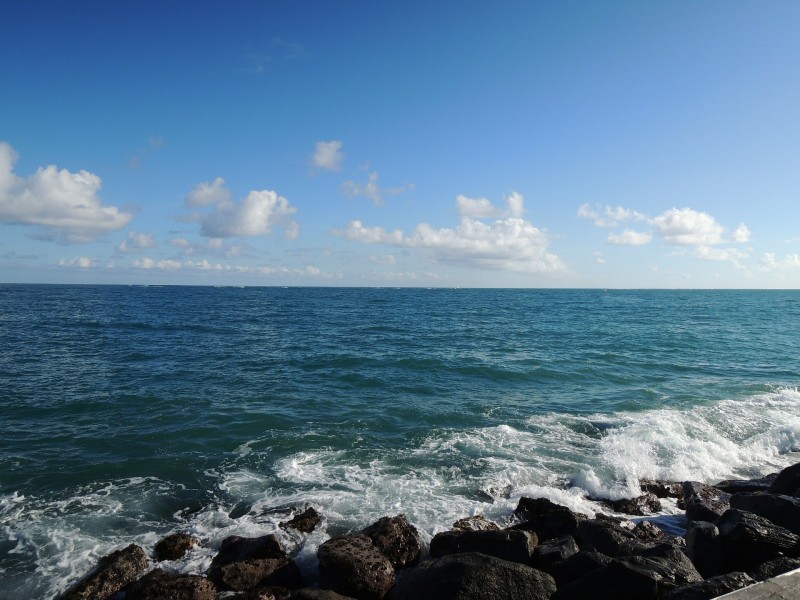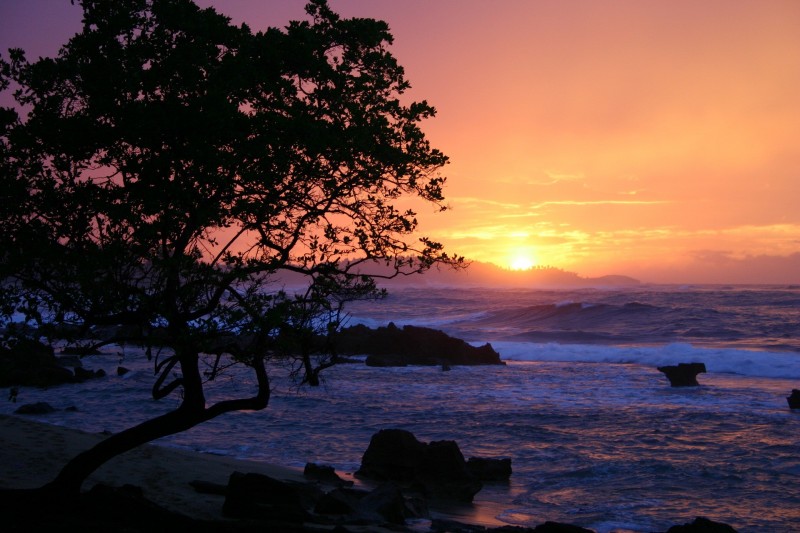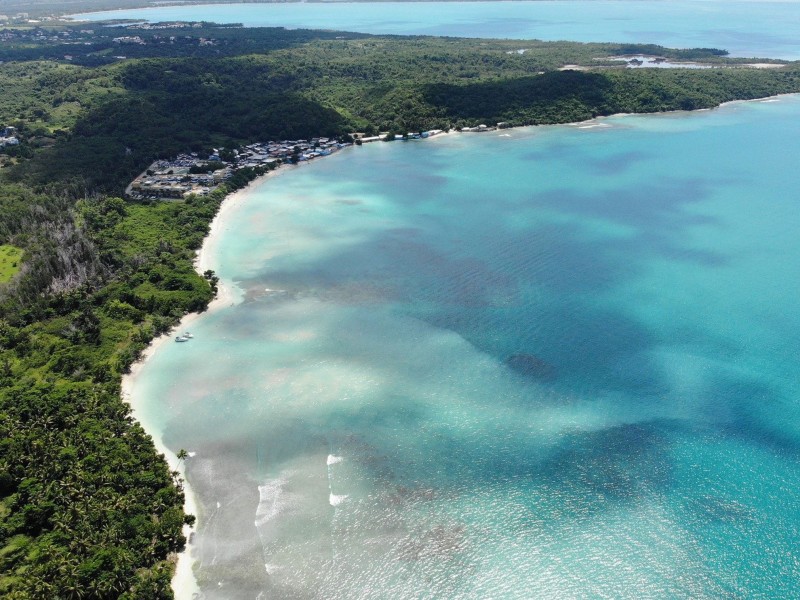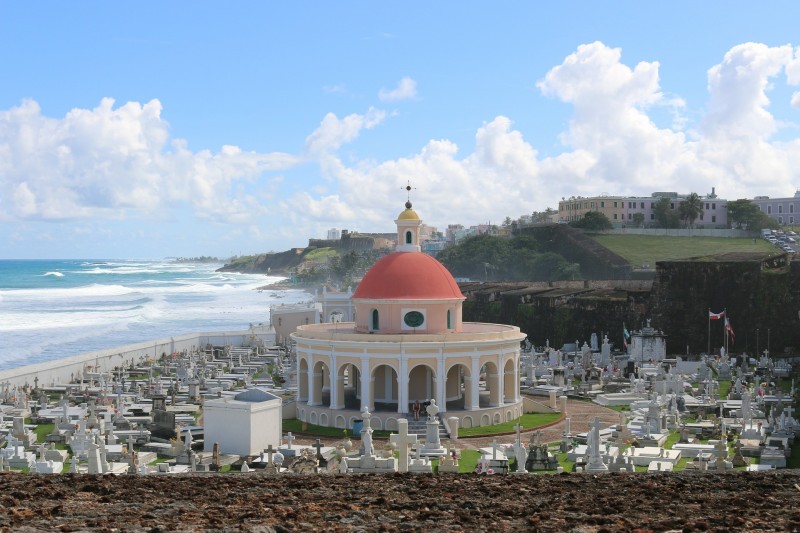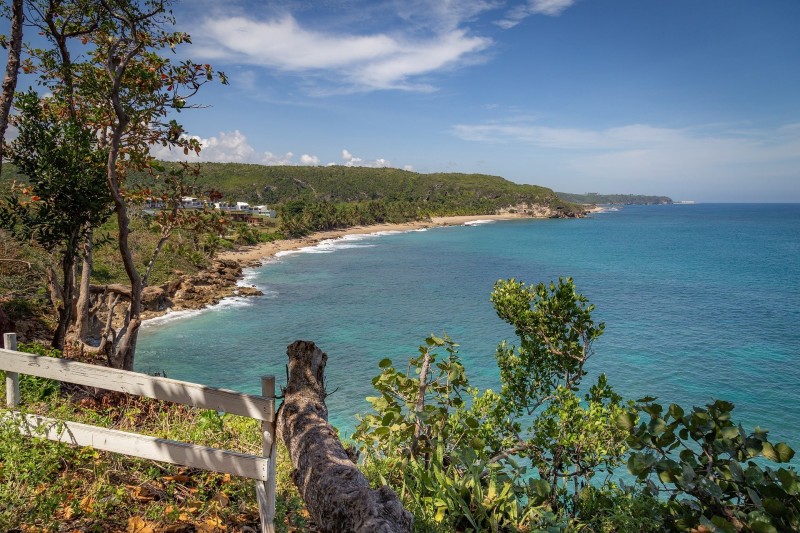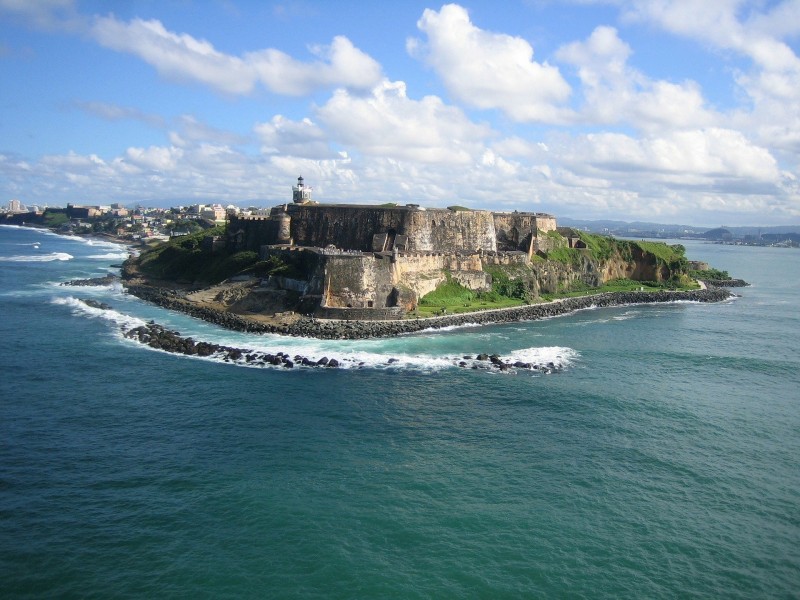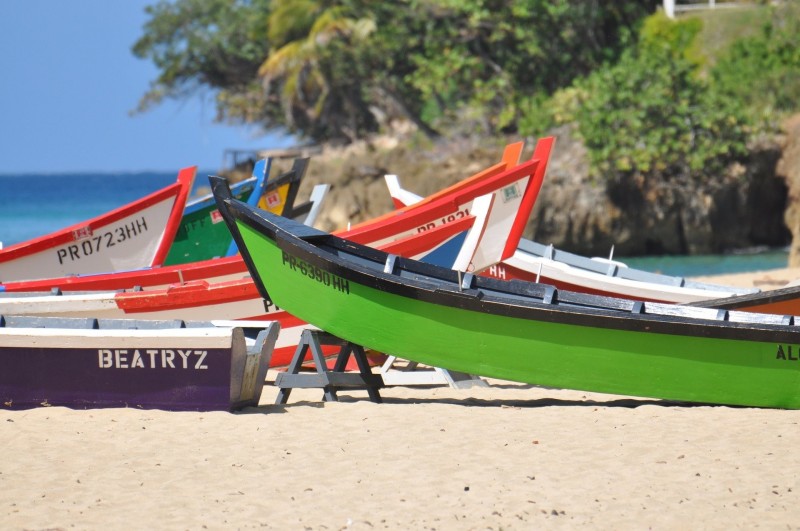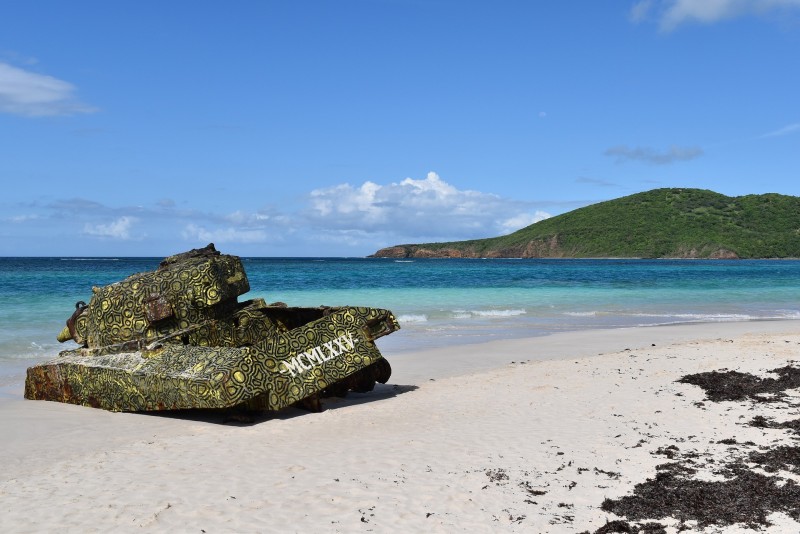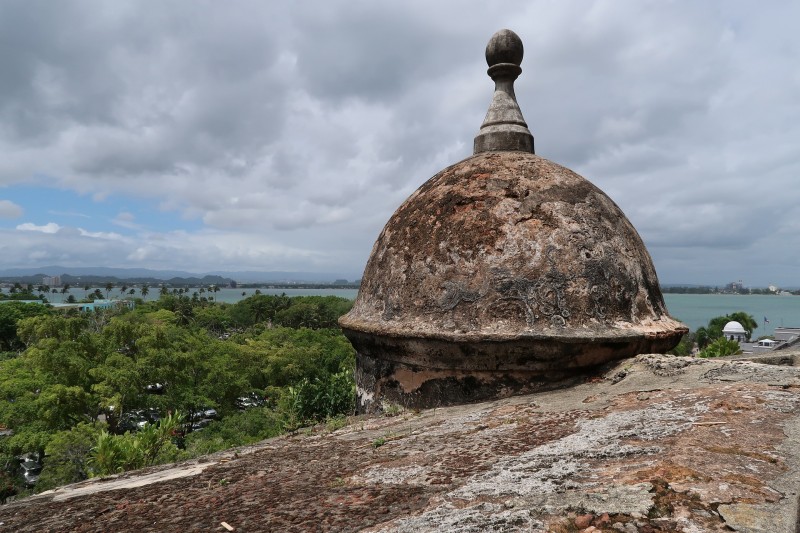Puerto Rico
Puerto Rico
Capital city description
San Juan is the capital and largest city of Puerto Rico, located on the island's northern coast, on the Atlantic Ocean. A major port and tourist resort of the West Indies, it is the oldest city now under U.S. jurisdiction. Initially, the settlement was known as Puerto Rico and the island of San Juan. The San Juan metropolitan area is the island's largest industrial and processing center, with petroleum and sugar refining facilities, tobacco processing, brewing, and rum distilling. Cement, pharmaceuticals, metal products, and clothing are also produced. San Juan is the island's financial capital, and many U.S. banks and corporations maintain offices or distributing centers there. Tourism is a significant component of the local economy, visitors being drawn to the extensively restored Old San Juan district and the area's luxury resort hotels (mainly in Condado). The port of San Juan handles both cargo and a large number of cruise ships, and the city's international airport (named after Luis Muñoz Marín, the island's first elected governor) is just outside Old San Juan; both facilities are among the busiest in the Caribbean.
Climate
Puerto Rico's climate is tropical marine, which means it's typically sunny, hot, and humid year-round. The temperature fluctuates between 76°F and 88°F in the coastal plains and 73-78°F in the mountains.
Languages spoken
Fun/Fascinating Facts
- Puerto Rico is an archipelago, as some people may not know, and there are residents on three of its islands: Puerto Rico, Culebra, and Vieques. At the same time, nearly a handful of islands are part of Puerto Rico but where no one lives besides animals: Isla de Mona, Cayo Icacos, Caja de Muertos, and Isla Palomino. These islands aren’t residential, but visitors can spend a day at these stunning locations, making fun trips.
- El Pirata Cofresi is Puerto Rico’s most famous, real-life pirate, as the legend goes. Born in the seaside town of Cabo Rojo, he was encouraged to dream about exploring the sea by sailors in town.
- The coqui, a small tree frog, is Puerto Rico’s national animal and is native to the island. According to the National Wildlife Federation, it’s different than other species of frogs as it doesn’t have webbed feet. When visiting Puerto Rico, it’s common to hear the male coqui‘s call during the late afternoon and night, especially if there’s been rain.
- Before Luis Muñoz Marin was elected governor of Puerto Rico by the Puerto Rican people, a military government included governors appointed by the federal government under US rule. To this day, Marin is the governor who has served the most with four terms, meaning that he was the governor for 16 years. He continues to be one of the most influential politicians in Puerto Rican history.
- The Arecibo Observatory is the world’s largest single-dish radio telescope and is open to visitors. Professors from Cornell University played an essential role in its construction, and the radio telescope has been in use for around 55 years. Located in Arecibo, which is about an hour away from the capital San Juan, there’s a visitor center and tours available to see and learn more about the dish.
Unique Customs/Traditions
- Whenever a plane lands in Puerto Rico, they clap as thanks for arriving safely. Others clap because they’ve finally returned home after being away for so long and are thankful to be back. It’s the first taste of Puerto Rico you’ll get if you fly in.
- Noche de San Juan is a celebration on June 23 where people all over the island celebrate the birth of Saint John the Baptist. Puerto Ricans visit beaches or nearby bodies of water (even pools), and at the stroke of midnight, they walk back into the water and fall back 3-7 times. They do it to have “good luck” the rest of the year.
- This tradition consists of asking our parents, grandparents, aunts, uncles, and godparents for the blessing. We usually say “Bendición, [papá/mamá/abuelo/abuela/tío/tía/padrino/madrina]” and they respond with “Dios te bendiga (God bless you).” It’s used less these years, but I still do it and teach my children to do it.
- This tradition is similar to the sweet sixteen, where a young lady is presented into society when she’s 15 years old. Arrange a huge party in honor of the young lady who just turned 15. The party is held at a social club or local community center and invites all the family and friends. The quinceañera and her father have a special dance, and then everybody else joins in the dance. Food and drinks are also present.
- The food served during the holiday season is lechón asado (roast pork) instead of turkey, but some people follow the American tradition of eating turkey on Thanksgiving. The rest of the meal consists of Arroz con gandules (rice and pigeon peas) and salad (usually potato or noodle salad).
Popular universities
| Name | Description | |
|---|---|---|
| University of Puerto Rico | The University of Puerto Rico (UPR) is situated on the Caribbean island of Puerto Rico. Students at the University of Puerto Rico can enjoy stunning natural landscapes, including mountains, waterfalls, and tropical forests like El Yunque National Forest. The population is bilingual, and the area is known for its delicious culinary traditions – with influences from Spain, Africa, and the Taino cultures. The University of Puerto Rico has both undergraduate and postgraduate campuses specializing in several different subjects and sectors. Spanish is the language of instruction for many UPR courses, but students must have a working knowledge of English. The individual professor decides the language used in-class lectures and in student evaluation activities. Prospective students at UPR must complete the admission application and pay a $30 fee. Students must also provide an original transcript and the results of their admission test. UPR also offers French, Italian, German, Portuguese, and Mandarin language courses. | |
| Inter american University of Puerto Rico | The Inter-American University of Puerto Rico is a large private non-profit university with Christian roots, currently employing approximately 1,500 academic staff and teaching around 50,000 students. The Universidad Inter American de Puerto Rico offers a mix of courses in visual arts, aviation, natural sciences, bio-technologies, environmental and chemical sciences, health sciences, social and political sciences, communications, entrepreneurship and business, IT, engineering, criminal justice, mathematics, music, psychology, religion, tourism, and social work. In addition to running a work-study program, the university also offers several scholarships. | |
| Polytechnic University of Puerto Rico (PUPR) | Polytechnic University of Puerto Rico (PUPR) is a small private non-profit establishment founded in 1966 with campuses in Orlando, San Juan, and Miami, and which offers courses in engineering, geomatic sciences, architecture, computer science, and business administration. With expenses towards the higher end for universities in Puerto Rico, PUPR’s tuition fees will set you back US$8,040 per year. | |
| Sacred Heart University | The Sacred Heart University, The oldest private university in Puerto Rico, was initially founded in 1880 by a religious order as an all-girls school. Now operating as a selective liberal arts school, The Sacred Heart University favors a holistic and interdisciplinary approach to education. Each student combines a significant field, a double major, a major, or three minors in three different disciplines. With courses in business administration, communication, education, humanities, natural sciences, and social sciences, tuition fees at Sacred Heart University are US$5,780 per year. | |
| Ana G. Méndez University System (SUAGM) | The Ana G. Méndez University System is the first private higher education provider established in Puerto Rico; the Ana G. Méndez University System (SUAGM) features four universities across the island and five sister branches based in Maryland Orlando, Tampa Bay, Miami, and Dallas. Entry requirements and tuition fees will vary depending on which of the group’s universities and courses you apply to. To encourage student internationalization, SUAGM runs several exchange programs for both staff and students and regular student trips overseas and collaborates with universities in Europe, Central America, and China. SUAGM offers many scholarships, including the Pell Grant, among others. | |
Festivals & Events
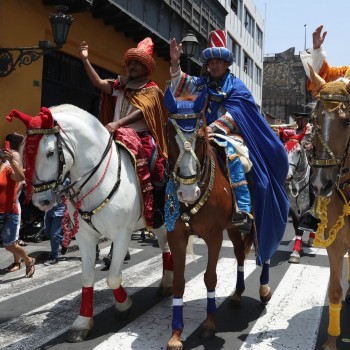
Three Kings Festival
Date: January 6
Along with Christmas and New Year's, the Epiphany on January 6th celebration is part of the holiday season in Puerto Rico. According to Catholic tradition, the Three Wise Men (in Spanish, Los Tres Reyes Magos) visited baby Jesus in the manger to deliver gifts. In Puerto Rico, town festivals throw parades featuring locals and actors dressed as the Three Wise Men as they pass out presents to children. The two most famous festivals are Fiesta de Reyes Juanadina, in the town of Juana Díaz, and Fiesta de Reyes Isabelinos, in Isabela.
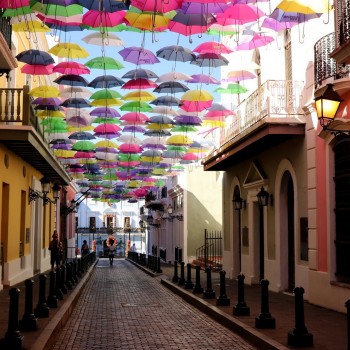
The Campechada
Date: Between November and December
La Campechada brings together artists, performers, musicians, actors, puppeteers, and others, intending to educate the public about Puerto Rican art and culture. The festival dedicates to a prominent Puerto Rican artist every year, which becomes the inspiration for many of the new works presented during the festivities. There is an Artisan Fair, a Book Fair, an Art Fair, guided walks, conferences, workshops, live drawing, theatrical performances, etc. The city hosting the event changes each year.
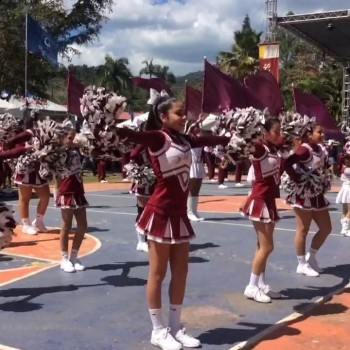
cold festival
Date: February
On an island known for its warm weather year-round, the Festival del Frío, or the “Festival of the Cold” in English, celebrates the coldest peak in Puerto Rico: the mountainous municipality of Adjuntas. Visitors can enjoy carnival rides, local artisans, games, food, live music, and more in a family-friendly environment.
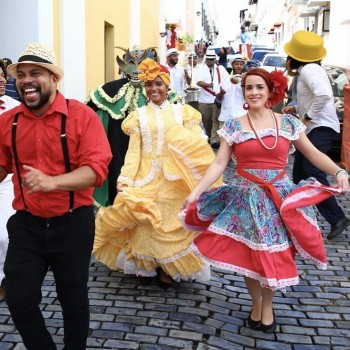
Puerto Rican and International Theater Festival
Date: May to June
There are theaters in the heart of Santurce, otherwise known as the art district of San Juan, and coffee shops and fantastic street art surround hip restaurants. The Francisco Arriví and Victoria Espinosa theaters come to life during this theater festival, which features performances of both local and international plays. Every year, the festival is dedicated to a prominent member of the theater community and features all types of theatrical works – from classic dramas to experimental performances.
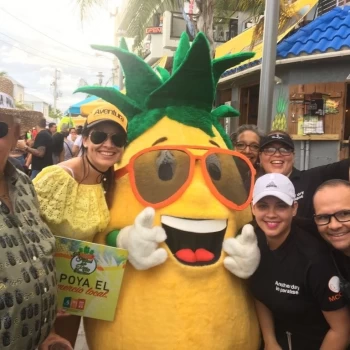
Paradise Pineapple Festival
Date: May 27
The "Pineapple Festival" is celebrated every year in La Parguera, an oceanfront community in the southern town of Lajas. The festival features vendors selling locally grown pineapples and dozens of local agricultural products and fried foods while local bands liven up the evening. La Parguera is the package with restaurants and bars and small hotels, charter boat rentals, and even a radiant bay. There is a 5 Km race with an impressive view of the marina and mangrove coves during the celebration that make La Parguera a favorite getaway for both locals and tourists.
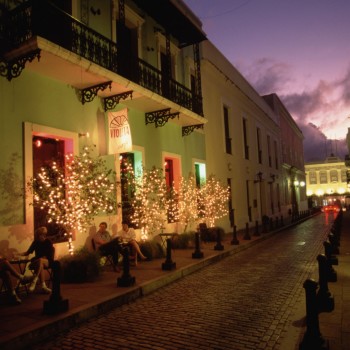
San Juans night
Date: June 23rd
Saint John's Eve, locally known as Noche de San Juan, is an unofficial celebration in the capital of Puerto Rico that celebrates the nativity of Saint John the Baptist. Hundreds of people crowd the beaches so that at midnight they can jump back into the ocean seven times for good luck. Some hotels and bars also throw parties in honor of Noche de San Juan.

Festival of Santiago Apostle
Date: Last weekend of July
In Loíza, there is another style of vejigante, whose masks makes from coconut and driftwood. During the Festival of Saint James, the Apostle, in Spanish Santiago Apóstol, there is a lively parade through the town where the vigilantes and the Spanish knights do battle, representing the struggle between the forces of good and evil. Bomba music, a piece of traditional folk music with a distinctive African influence, thumps out. Same time, dancers use colorful skirts to create a dialogue with the drummers, and the musicians respond to the dancers rather than the other way around.
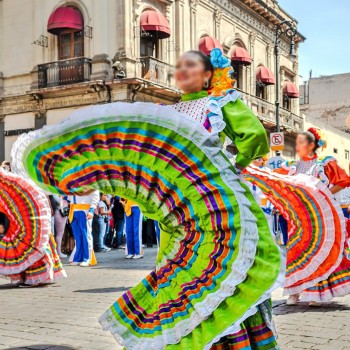
National Indigenous Festival
Date: End of November
This festival celebrates Puerto Rico's indigenous roots and the influence of Taíno culture and traditions. The town of Jayuya gave the name after one of the big caciques, or chiefs, that lived on the Island when the Spanish arrived in the 1500s and where Taíno hieroglyphs find carved into a giant boulder. The Spanish eradicated the Taínos, but their influence still exists in Puerto Rican culture. Jayuya also contains the highest peak in Puerto Rico, some of the best coffee plantations on the Island, a moonshine distillery, and a hot air balloon. Getting there is tricky but worth the trip!
Attractions / Top Sights
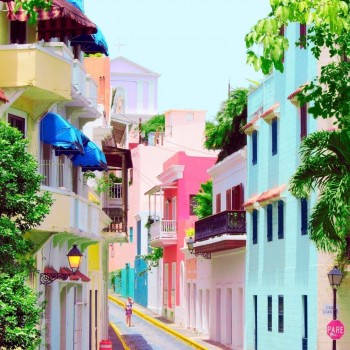
Old San Juan (San Juan Viejo)
When to visit: https://www.planetware.com/tourist-attractions/puerto-rico-pr.htm
Old San Juan is an island connected to the main island by bridges on the eastern side. The oldest section is on the west side and walled in on three sides. The historic city divides into seventeen square blocks. The northern side of the town is uphill, and It comprises the residential area in the city. The southern part, or port area (ports 1-4), is the commercial and tourist section that includes shops, piers, and most restaurants. Fort San Cristobal protects the city's eastern side. The western area of the town contains Paseo de la Princesa, La Fortaleza (Governor's Mansion), and Fort El Morro. While Old San Juan has no beaches, no resort hotels, and not much natural beauty, it's still one of the most exciting places to visit in Puerto Rico. You could spend many happy days just walking around the walled city, sampling delicious Puerto Rican cuisine, and dancing to salsa all night alongside the locals. Here's how to make the most of your time there.
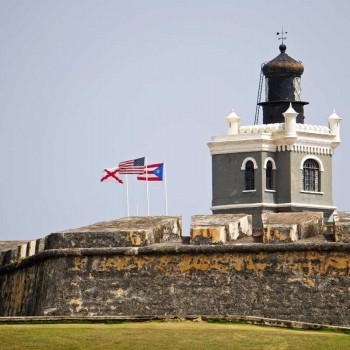
El Morro Fort (Fort San Felipe del Morro)
Construction for the hulking six-story fortress started in 1539. It builds to deter sea attacks and went on to withstand two world wars and several other scrimmages. Now, El Castillo San Felipe del Morro (known simply as "El Morro") is Puerto Rico's go-to tourist attraction, both for its extensive history and its outstanding vistas of the Atlantic Ocean. El Morro extends out of San Juan harbor and beckons to cruise ships. You can also walk through the fortress' depths, including a maze of tunnels, barracks, and prison cells. Exhibitions and a park film offer a more in-depth look at the fort's history, and park rangers are stationed around the site to answer questions and lead interpretative programs. El Morro is one of two forts inside the San Juan National Historic Site. Its sister, the Fort San Cristóbal, is one of the largest Spanish fortresses in the Americas.
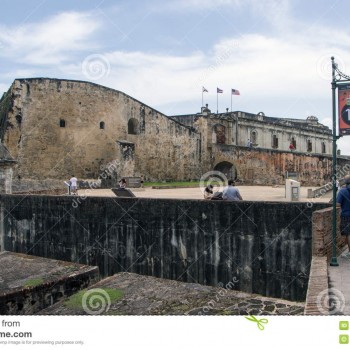
San Cristobal Castle
Castillo San Cristóbal is considered the largest fortress built in the Americas. It constructs to protect the city of San Juan from attack by land from the east. It is a fortification with three levels and an extensive series of outer defenses, and it took over 150 years to complete. The Irish-born Tomás O’Daly was Chief Engineer, and Juan Francisco Mestre assisted him. The central plaza of San Cristóbal was the heart of the fort. It is where troops drilled, were inspected, and assembled for formal events. Eleven casemates border the plaza. Casemates are large vaulted, bombproof rooms designed with gun ports for cannons. The arch in the ceiling provided strength to support gun desks above and withstand the concussion of shells exploding overhead. Casemates also housed officers’ quarters, barracks, storage areas, the kitchen, and latrine. Thick-walled gunpowder magazines were built close by the plaza, casemates, and tunnels and designed to provide optimal conditions for the storage of the powder. Artillery ramps offered access to the main firing battery and the dry moat.
El Yunque National Forest
El Yunque National Forest is the sole tropical rain forest in the U.S. National Forest System. This Forest differs significantly from other U.S. National Forests because of its year-round tropical climate and immense biodiversity. Start your visit by stopping by the El Portal Rain Forest Center. Below the walkway at ground level, there is a short interpretive nature trail where you can explore the understory of the canopy and get some spectacular views of the lower Forest and the coastal plain. This Forest offers several unique recreation activities, including Forest Adventure Tours and a Rent-a-Ranger Program. The Forest provides many scenic views. Only by hiking can you reach the Forest's highest peaks. El Yunque's peaks offer beautiful views of the surrounding Forest, neighboring heights, incoming clouds, and the nearby Atlantic Ocean and the Caribbean Sea. Put on your boots and hike to Mount Britton Observation Tower for more exciting pictures. From this Tower, you can enjoy the Humacao Lagoons and the Yabucoa Valley. Or head up to El Yunque Rock. There are currently 24 miles of recreational trails. These trails are restricted to foot traffic (hiking) only.
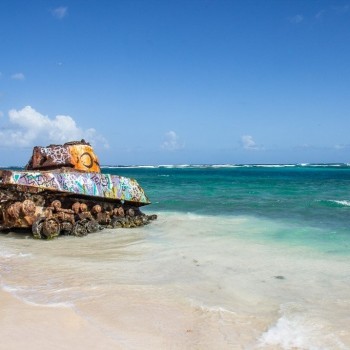
Culebra Island (Isla Culebra)
It is located 20 miles off the coast of Fajardo, on the east side of Puerto Rico, and can reach by a small plane or boat. The island is about 10 square miles, divided into six barrios (districts). Culebra surrounds by more than 20 cays bustling with marine life, making it an absolute haven for underwater adventurers and casual beachgoers. Reaching Culebra can be done by air or sea. The fastest way is to catch a small plane departing from either SJU or Isla Grande airports (tickets range from $60–$90 per trip), and there is also a ferry that Opens in a new window that departs from the town of Ceiba (for $3-$5 and about 40 minutes from SJU airport).
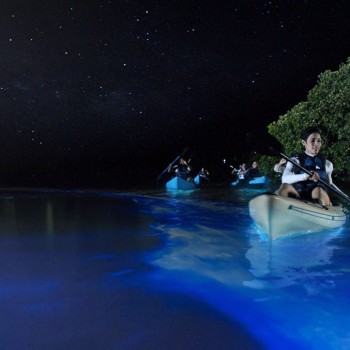
Vieques and Bioluminescent Bay
The best bioluminescence effect in the world can find on Vieques' magical island, but don't take our word for it— the Guinness World Record recognized it in 2006. Vieques's breathtaking Mosquito Bay designates as one of the 2020s Seven Wonders of the World by Condé Nast Traveller. Located to the east of Puerto Rico's main island, you Can reach the tiny island of Vieques either by ferry or via a small plane. Once in Vieques, you'd want to arrange a kayak tour of the bay with one of the island's tour providers (some of them even have clear-bottom kayaks!). When planning your visit, it's essential to consider the moon's phases as the glowing effect appreciates during nights with a new or crescent moon.
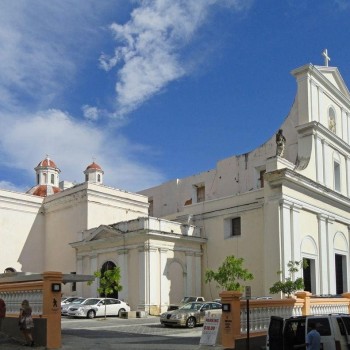
Cathedral of Saint John the Baptist
The Saint John the Baptist Cathedral in San Juan is the oldest church in Puerto Rico and the second oldest in all of the American continent. The Cathedral's evolution construction-wise was long and hard, lasting close to two centuries. It is mainly a result of various misfortunes, from storms, hurricanes, earthquakes, and even the Dutch attack on the city in 1625. Her elegant circular staircase is of great beauty, with Gothic ceilings and the old belfry. This late Gothic style was prominent in Spain and the Americas in cathedrals of the XVI century. At the end of 1802, construction of the final phase began and is as it currently stands. This architectural design belongs to the Engineer Tomás Cedeño.















